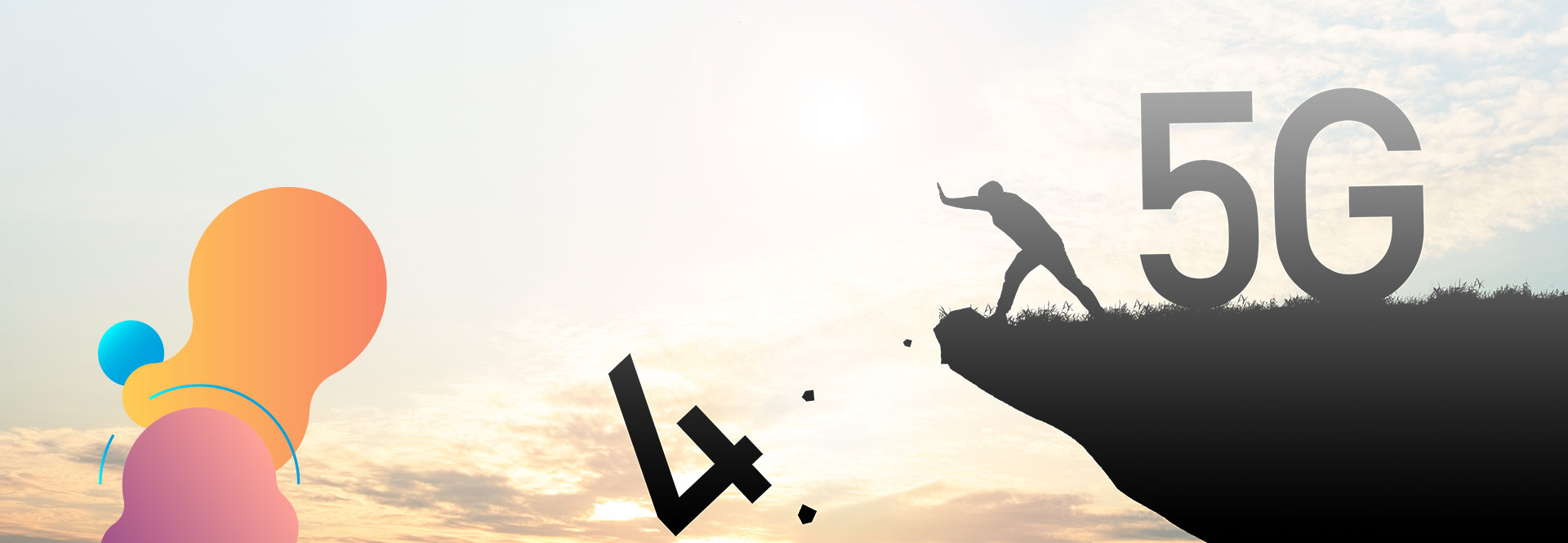Let us take a closer look at the rise of 5G
Communications providers need to think about what their strategy might look like at a time when 5G connectivity is becoming more prevalent. If your business is investing in providing connectivity and mobile access, you can not afford to ignore the 5G revolution.
It’s a well-known fact that to stay competitive in today’s digital landscape, you need to make sure you are ready to take advantage of the latest trends. While not every new innovation in the digital world is necessarily helpful to your business, some are essential to your continued growth.
Deloitte’s Connectivity and Mobile Trends 2021 survey shows the rapidly growing demand for a new kind of connectivity. Let us learn more about 5G trends and the future of connectivity.
Is Your Connectivity Offering Good Enough?
Communications service providers are under more pressure than ever in today’s post-pandemic landscape. As Deloitte’s survey shows, the pandemic led people to return home more and adopt new digital habits.
Business people began relying on their own home connections to work outside the office. Everything from the strength of the broadband connection to the strength of the cellular signal became critical to keeping people going in their daily lives. To keep customers happy, businesses had to start prioritizing better connections – and fast.
In the early days of the pandemic, ISPs largely performed well, delivering broadband services to homes despite massive changes in demand and new traffic patterns. Some providers even offered higher speeds and additional bandwidth at a discount, showing their commitment to their customers. Some 70% of respondents in Deloitte’s Mobile Trends and Connectivity study said they were almost or completely satisfied with their home Internet during the lockdown.
Although customers were satisfied with their connections during the pandemic, they also indicated that maintaining the required level of satisfaction often required some work.
With more people working and going to school at home, households were constantly pushing the limits of home Internet and mobile networks, resulting in dead spots, dropped connections, and unstable virtual interactions. The number of customers purchasing devices to improve network coverage is on the rise. Purchases of Wi-Fi mesh networks, extenders, and mobile hotspots increased by about 50% after the pandemic began.
The Rise of a New Connected World
As people have lost the ability to connect with colleagues and loved ones in person, we have become increasingly dependent on virtual connections to fill the void. Most consumers surveyed in the Deloitte study said they preferred to connect to the Internet via Wi-Fi, either through a cable or fiber connection. However, many young consumers also began using their data plans for access.
Younger smartphone users remained tethered to their homes as the pandemic continued and reliance on the cellular network for connectivity increased. Deloitte’s survey results found that the likelihood of people using mobile hotspots for connectivity increased as more people in the household worked from home.
Most consumers did not notice much difference between their cell phone and Wi-Fi connections, leading to a shift in usage. Many younger users foresee a future with wireless and cellphone-only households. Currently, about 15% of all U.S. Internet users rely on their smartphones for Internet access. That percentage rises to 28% among 18- to 29-year-olds.
If consumers believe they can get the same performance from an Internet-connected smartphone as they can from a home Internet connection, this presents an incredible opportunity for wireless carriers looking to optimize the customer experience.
By fully upgrading your mobile network for 5G technology, you can deliver a new level of connectivity to your customers – a level that will immediately lead to better experiences. Although only about 10% of mobile users in the U.S. currently have a 5G data plan and a 5G phone, the adoption of these types of technologies will definitely impact future user behavior.

Will Mobile Connectivity Replace Wi-Fi?
Studies suggest that communications service providers could be the forerunners of the next wave of connectivity. These reports show that about one in five users has reduced their Wi-Fi usage after deploying 5G technology. Another 10% have stopped using Wi-Fi on their phone altogether.
The adoption of 5G technology will continue to grow over the next few years. Some experts believe that by 2025, about 50% of the world will have access to 5G technology. This could help accelerate the move toward a more mobile-friendly future.
As younger generations continue to buy their own homes and start their own families, there is also the possibility that their usage patterns will change again, and the trend will shift back from wireless to more “stable” wired options. However, for communications service providers looking to take advantage of the latest technologies, this change in behavior could be an interesting opportunity.
Some 39% of those surveyed by Deloitte said they would be happy to forgo their current home ISP to use 5G connectivity via their smartphone once it becomes available in their area. However, younger respondents to the survey were significantly more willing to embrace 5G over the home Internet than older respondents.
Another point worth noting is that communications and Internet service providers could even miss out on customers if they are not properly invested in 5G. Deloitte’s study also found that about 60% of users might switch their service provider to get access to a 5G solution if their current company does not offer it as standard.
Looking Ahead to a Future of 5G Connections
Right now, we are still in the early stages of transitioning to the 5G landscape. However, if this technology is anything like the other major trends of the past few years, such as artificial intelligence and automation, it is likely to be significant. For providers of communications and Internet services, 5G is an opportunity not to be missed.
More than ever, customers are looking for more flexible connectivity options to ensure they can stay on the Internet wherever their lives take them. This could mean that demand for 5G will influence a significant number of purchasing decisions over the next few years.
If your company is a communications or internet service provider about to embark on its own digital transformation adventure, now might be the time to think about what technologies will be essential to your future. Will 5G be a necessary offering in the new connected landscape? If so, how can you ensure you can deliver that service in a way your customers can trust? Will you need to introduce new process automation strategies or consider self-service solutions to help your customers transition to their new 5G solutions?
Contact Bulb Tech today to learn more about how you can prepare your business for the technology trends of the future.
Are you ready for 5G roll out?
Contact us to learn how Cempresso can help on your journey



